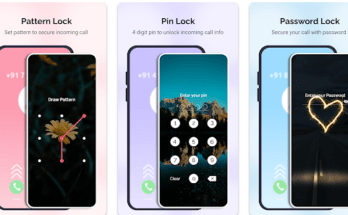Have you ever desired a premium app but hesitated due to the cost? You’re not alone. Many fantastic apps come with a price tag, leaving budget-conscious users searching for alternatives. Enter “Paid for Free,” a concept that promises access to premium apps without spending a dime. But is it too good to be true? This comprehensive review dives into the world of Paid for Free, exploring its functionalities, potential benefits, and drawbacks.
What is Paid for Free?
Paid for Free isn’t a singular app or service. It’s a broad term encompassing various methods to potentially access paid apps for free. These methods can be legitimate or exploit loopholes within app stores or developer practices. It’s crucial to understand the ethical implications and potential risks associated with different Paid for Free approaches.
How Paid for Free Works
There are several ways users attempt to access paid apps for free. Here’s a breakdown of some common methods:
- Free Trial Exploits: Some apps offer free trials. The idea behind this approach is to exploit these trials by creating multiple accounts or using virtual credit cards to bypass payment information. However, this is often against app store terms of service and can lead to account suspension.
- App Sharing Platforms: Third-party platforms claim to offer free access to paid apps. These platforms might distribute modded versions of apps with features unlocked or in-app purchases disabled. However, these apps can be riddled with security vulnerabilities and malware.
- Earning App Credits: Certain apps reward users with points or credits for completing tasks like watching videos or taking surveys. These credits can then be redeemed for paid apps or in-app purchases. While legitimate, this method can be time-consuming and may not always offer the desired rewards.
- Promotional Offers: Occasionally, developers offer their paid apps for free for a limited time as a promotional strategy. Following developer websites and app store listings can help you identify such opportunities.

Features of Paid for Free
It’s important to understand that “Paid for Free” isn’t a specific feature within an app. However, depending on the method used, users might gain access to features typically found in paid apps, such as:
- Premium Content: This could include additional levels in games, ad-free experiences, access to exclusive features, or removal of limitations in functionality.
- In-App Purchases Removed: Paid apps often contain in-app purchases for additional features or resources. Paid for Free methods might aim to bypass these purchases, granting access to the full experience without spending money.
- Customization Options: Some apps offer expanded customization options in their paid versions. Paid for Free approaches could potentially unlock these options for a free experience.
Important Note: The specific features accessible through Paid for Free methods vary greatly depending on the app and the chosen method. Additionally, some methods might not even deliver the promised features and could pose security risks.
Conclusion and Verdict: Paid for Free
The concept of Paid for Free is alluring, offering the potential to access premium apps at no cost. However, the reality is often riddled with risks and limitations. Here’s a breakdown of the key takeaways:
- Ethical Concerns: Certain Paid for Free methods exploit loopholes or violate terms of service, raising ethical questions about their use.
- Security Risks: Downloading apps from untrusted sources or using modded versions can compromise your device’s security and expose you to malware and data breaches.
- Unreliable Access: Many Paid for Free methods offer unreliable access. Apps might stop working after a limited time, requiring users to find new methods.
- Limited Selection: Not all paid apps are vulnerable to Paid for Free methods. The desired app might not be available for free at all.
Verdict: While Paid for Free methods might seem tempting, the potential security risks, ethical concerns, and unreliable access make them a risky proposition. There are safer and more ethical alternatives to consider.
FAQs: Paid for Free
Here are some frequently asked questions regarding Paid for Free methods:
1. Is it safe to use third-party app stores to get paid apps for free?
Answer: No, using third-party app stores to access paid apps for free is generally not safe. These platforms may distribute apps riddled with malware or that steal your personal information.
2. Can I get banned for exploiting free trials?
Answer: Yes, app stores have terms of service that prohibit exploiting free trials. Creating multiple accounts or using virtual credit cards to bypass payment information can lead to account suspension or even device bans.
3. Are there any legitimate ways to get paid apps for free?
Answer: Yes, there are a few legitimate ways. Here are a couple:
- Wait for Promotions: Developers sometimes offer their paid apps for free during sales or promotional events. Following app store listings and developer websites can help you discover such opportunities.
- Earning App Credits (with Caution): Some legitimate apps reward users with credits that can be redeemed for paid apps. However, be cautious about the time commitment involved and ensure the apps are reputable.
4. What are some good alternatives to Paid for Free methods?
Answer: Here are some safe and ethical alternatives:
- Free App Alternatives: Look for free apps that offer similar features to the paid app you desire. There are many great free apps available that can fulfill your needs.
- Wait for Free Promotions: As mentioned earlier, developers sometimes offer their paid apps for free during sales or promotions.
5. Is it okay to use a friend’s account to access a paid app?
Answer: Sharing app accounts typically violates the app store’s terms of service. It’s best to avoid this practice and explore the alternatives mentioned above.
In Conclusion
While the allure of free premium apps is understandable, Paid for Free methods often come with significant drawbacks. Consider exploring the safe and ethical alternatives mentioned in this review. There’s a good chance you’ll find a suitable solution that meets your needs without compromising your device’s security or ethical principles.



